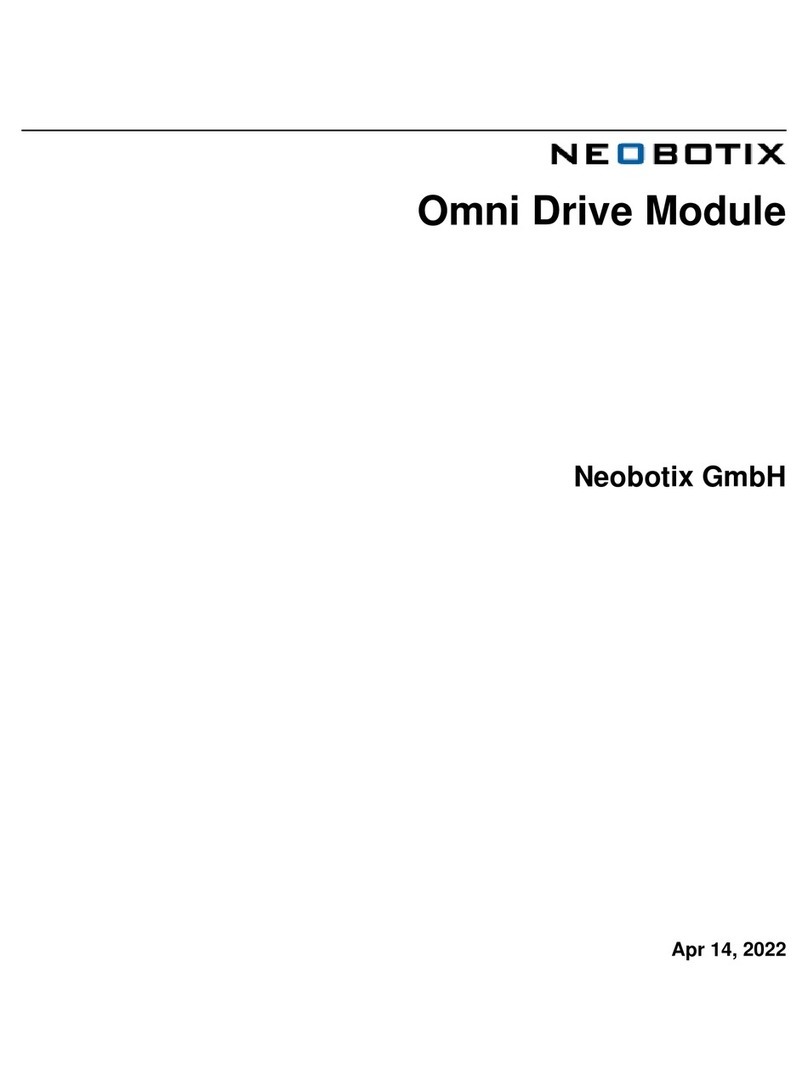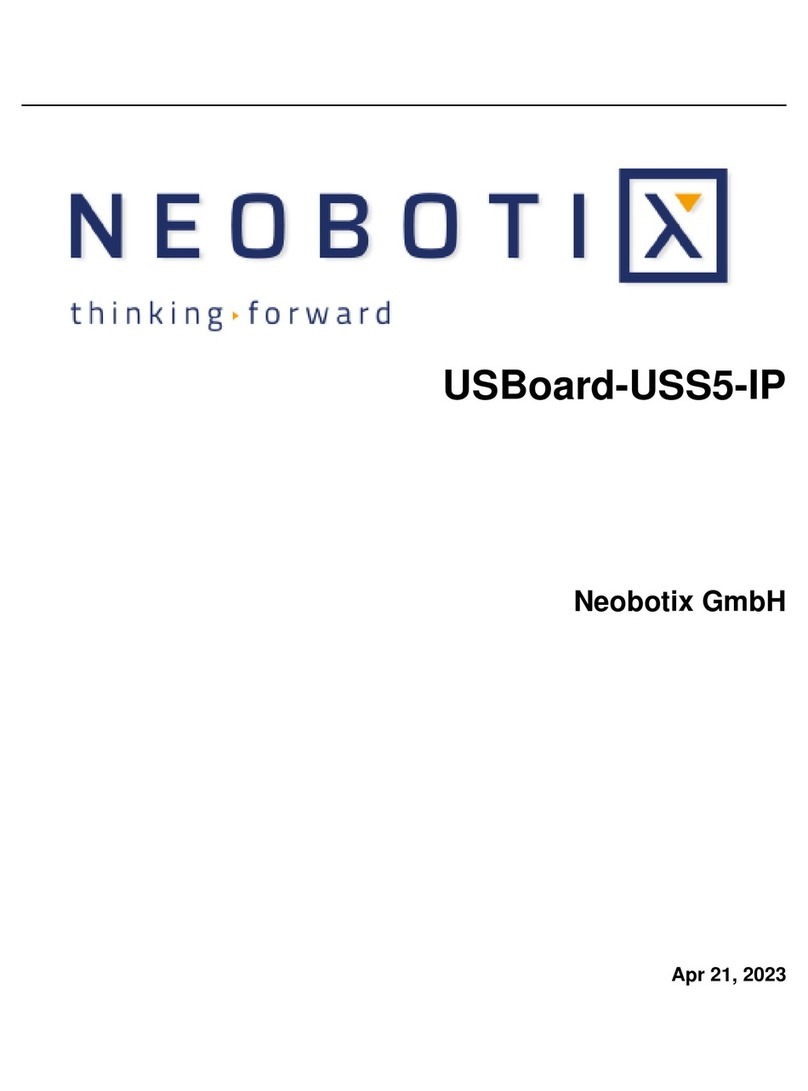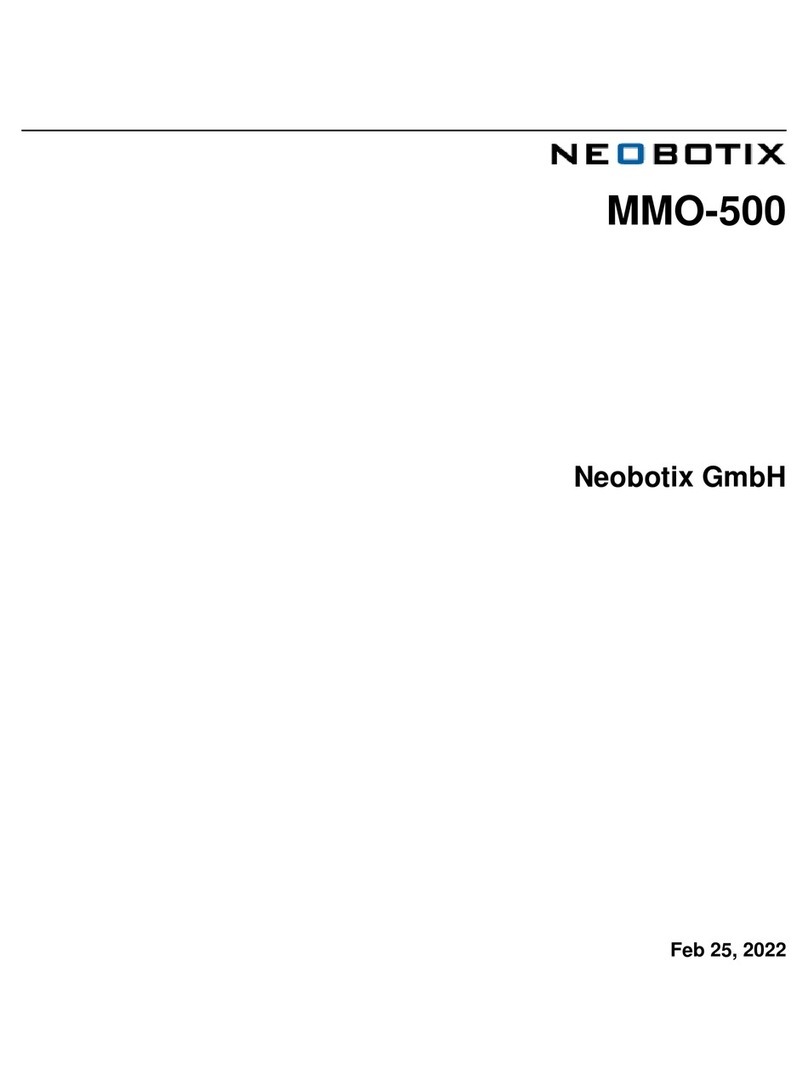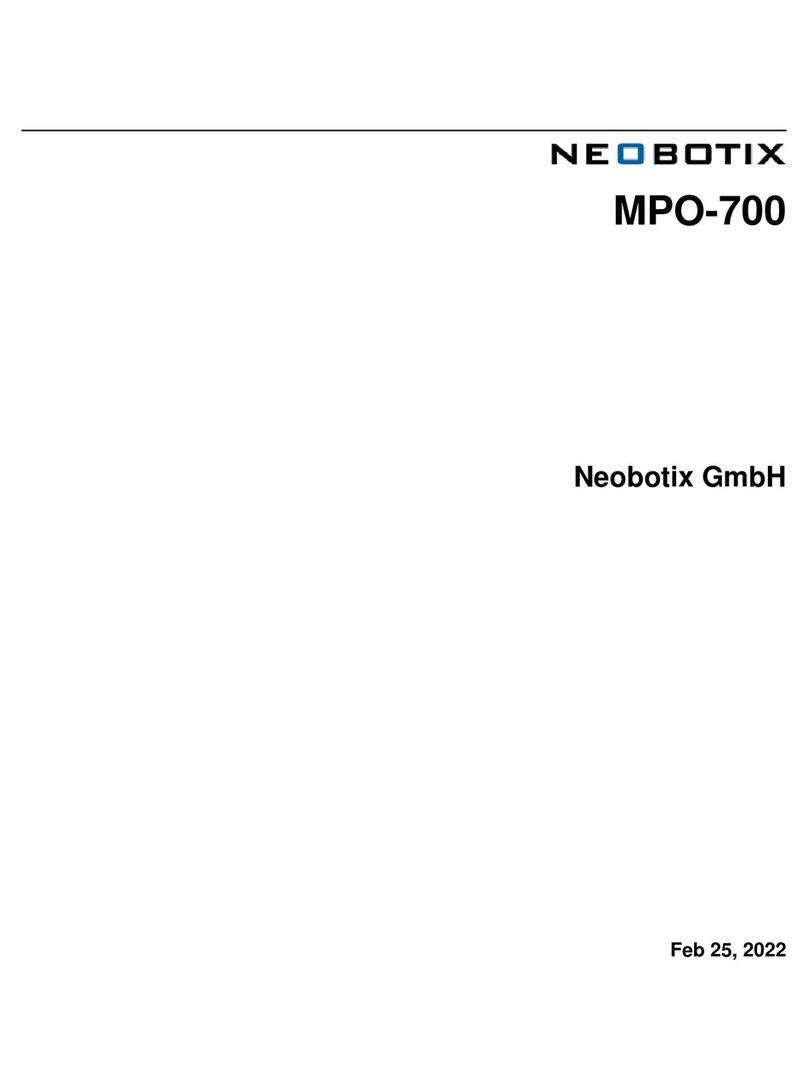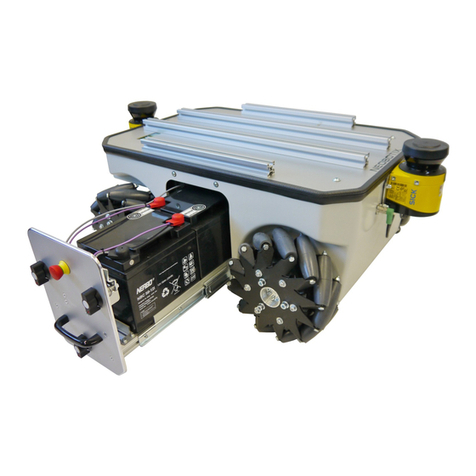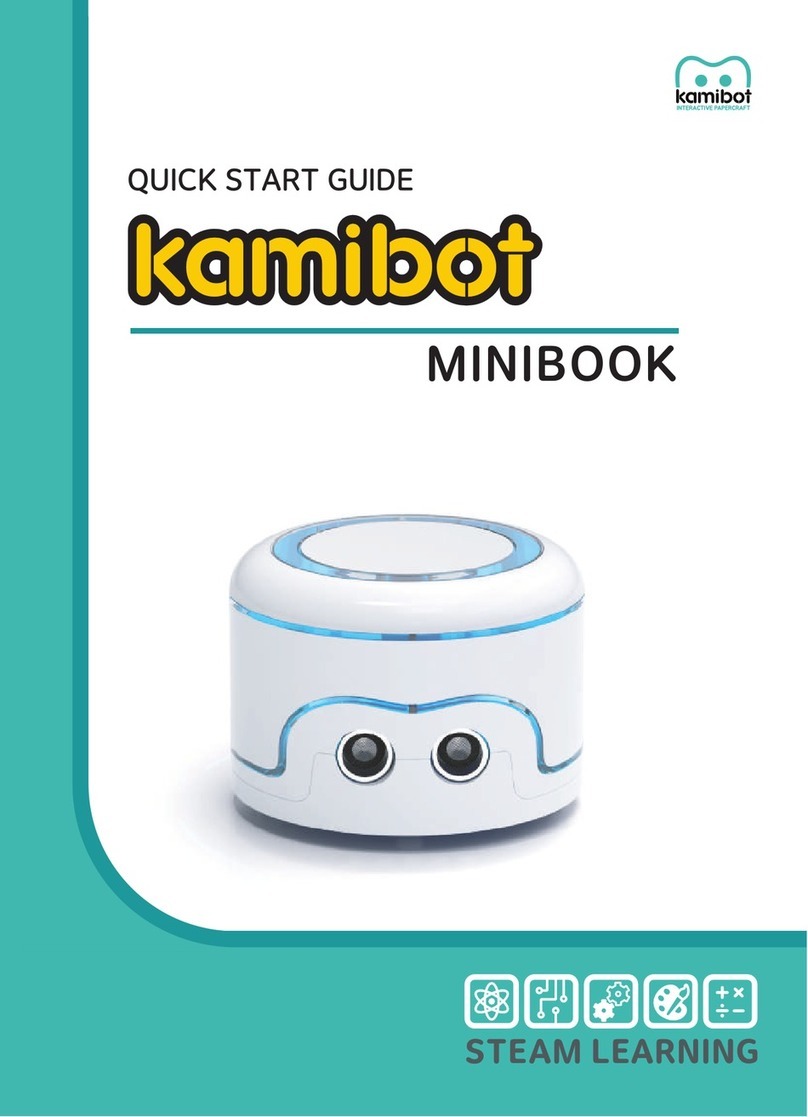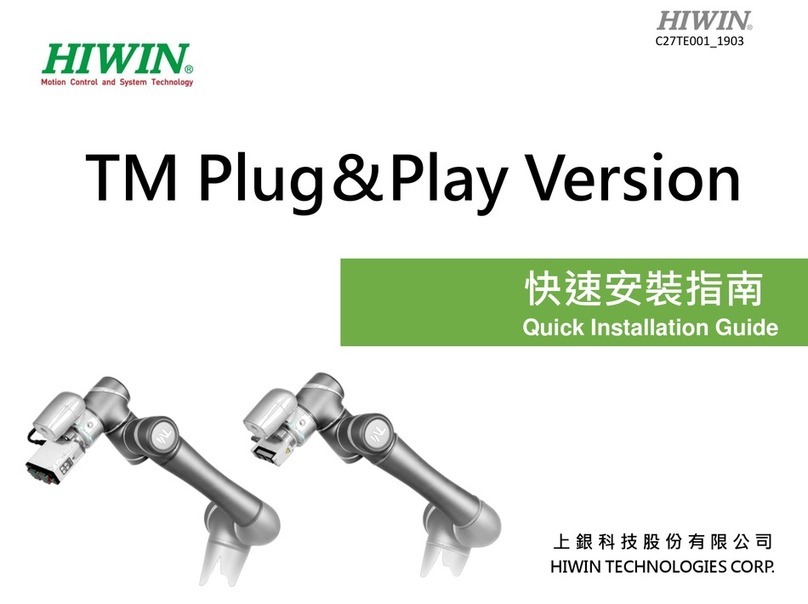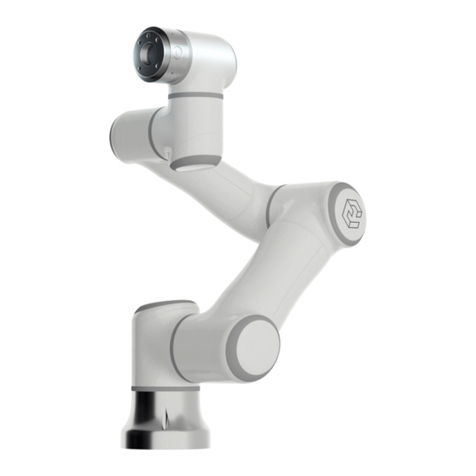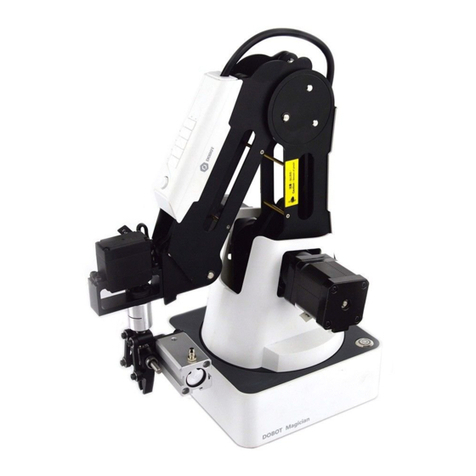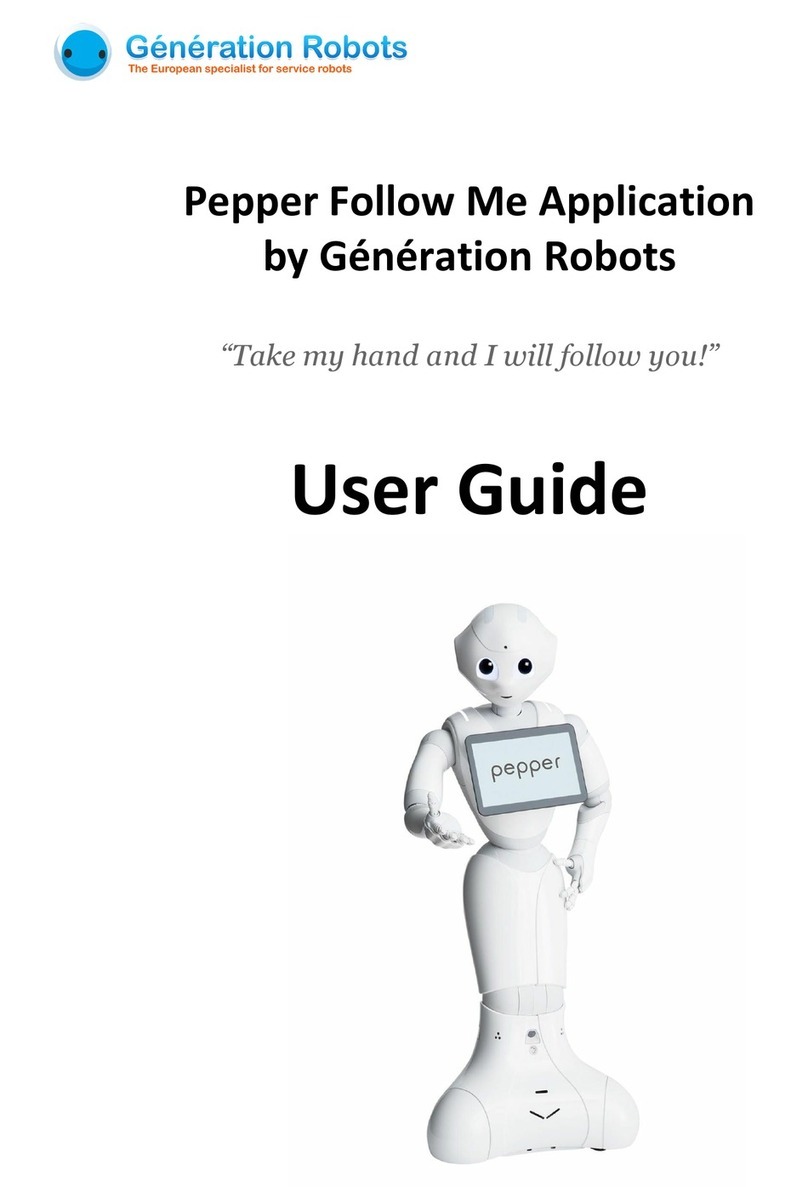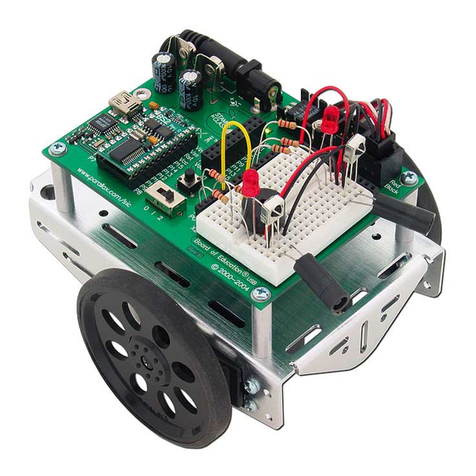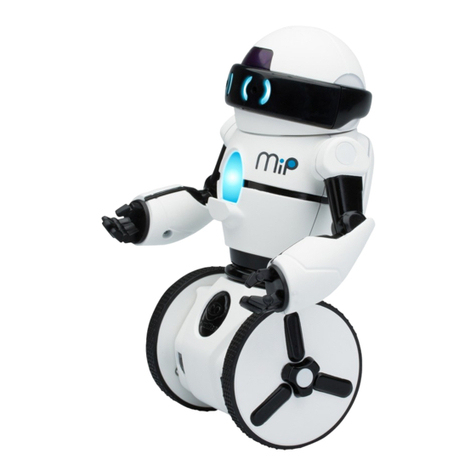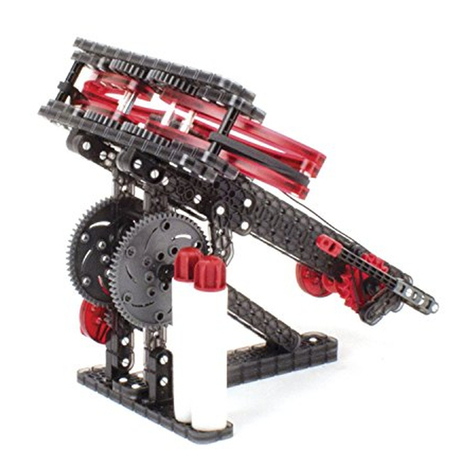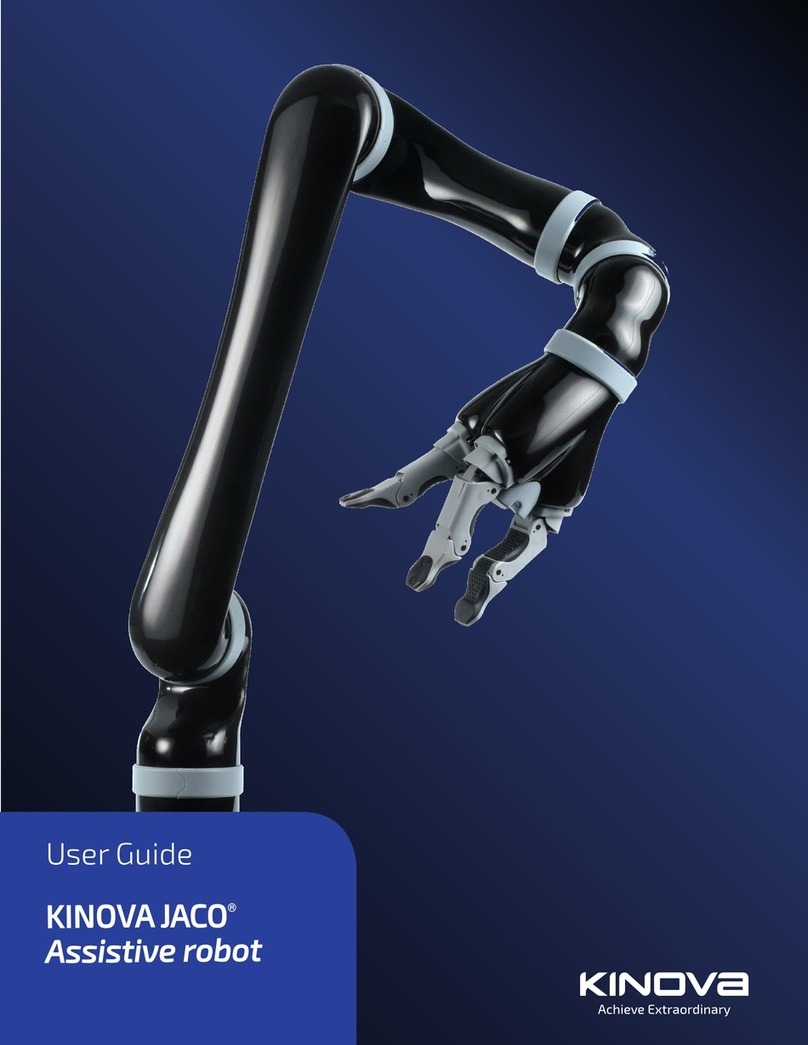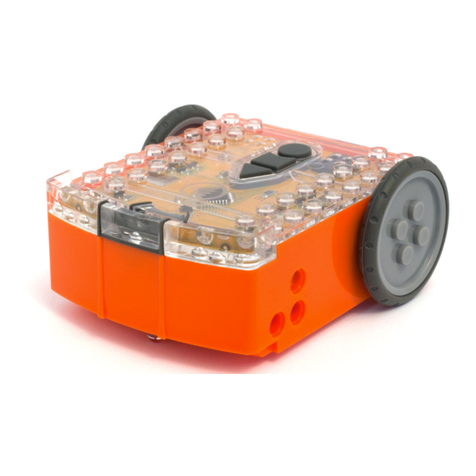neobotix MMO-700 User manual

MMO-700
Neobotix GmbH
Apr 14, 2022

Contents:
1 MMO-700 1
1.1 Product Information ........................................... 2
1.1.1 Intended Use .......................................... 2
1.1.2 Improper Use .......................................... 2
1.1.3 Working Area .......................................... 2
1.1.4 Qualified Personnel ....................................... 2
1.1.5 Safety Instructions ....................................... 2
1.2 Operating Elements ........................................... 3
1.3 Changes in Handling ........................................... 3
1.3.1 With Radio Emergency Stop System .............................. 3
1.3.2 With Flexi Soft Safety Controller ................................ 3
1.4 Arm .................................................... 4
1.4.1 Properties of the Universal Robots Arms ............................ 4
1.4.2 Standalone Operation ...................................... 4
1.5 Mechanical Properties .......................................... 4
1.5.1 Dimensions of the Robot .................................... 4
1.5.2 Dimensions of the Manipulator ................................. 4
1.6 Transport ................................................. 5
1.6.1 Unpacking and Assembly .................................... 5
1.6.2 Installing the Auxiliary Batteries ................................ 6
1.7 Taking out of Service ........................................... 8
1.8 Legal Notes ................................................ 8
1.8.1 EU Declaration of Incorporation ................................ 8
1.8.2 RoHS Information ....................................... 8
2 MPO-700 9
2.1 Product Information ........................................... 10
2.1.1 Intended Use .......................................... 10
2.1.2 Improper Use .......................................... 10
2.1.3 Working Area .......................................... 10
2.1.4 Qualified Personnel ....................................... 11
2.1.5 Safety Instructions ....................................... 11
2.2 Operating Elements ........................................... 11
2.2.1 Emergency Stop Buttons .................................... 11
2.2.2 Key Switch ........................................... 11
2.2.3 Charging Connector ....................................... 11
i

2.2.4 Charging Contacts ....................................... 13
2.2.5 LC-Display ........................................... 13
2.2.6 Access to the On-Board Computer ............................... 13
2.3 Mechanical Properties .......................................... 13
2.3.1 Dimensions ........................................... 13
2.3.2 Absolute Maximum Ratings .................................. 14
2.3.3 Positions of Sensors ....................................... 14
2.3.4 Electrical Properties and Miscellaneous Data ......................... 14
2.3.5 Communication To Internal Devices .............................. 16
2.4 Transport ................................................. 17
2.4.1 Packaging ............................................ 17
2.4.2 Unpacking the Robot ...................................... 17
2.4.3 Short Distance Transport .................................... 17
2.4.4 Long Distance Transport .................................... 18
2.4.5 Shipping with AGM Battery .................................. 18
2.4.6 Shipping with LiFePO4 Battery ................................ 18
2.5 Maintenance ............................................... 19
2.5.1 Cleaning ............................................. 19
2.5.2 Omni Drive Modules ...................................... 19
2.5.3 Batteries ............................................. 19
2.5.4 Fuses .............................................. 20
2.6 Taking out of Service ........................................... 20
2.7 Legal Notes ................................................ 20
2.7.1 EU Declaration of Conformity ................................. 20
2.7.2 RoHS Information ....................................... 20
3 General Hardware Information 21
3.1 Key Switch ................................................ 21
3.1.1 Turning on ........................................... 21
3.1.2 Emergency Reset ........................................ 21
3.1.3 Shut down ............................................ 21
3.1.4 Switch off ............................................ 21
3.2 LC Display ................................................ 22
3.2.1 Main View ........................................... 22
3.2.2 The Info View .......................................... 23
3.3 Batteries ................................................. 24
3.3.1 Battery Types .......................................... 24
3.3.2 Charging ............................................ 25
3.3.3 Recycling ............................................ 26
3.4 Charging Stations ............................................ 26
3.4.1 Automatic Charging Station .................................. 26
3.4.2 External Battery Charging Station ............................... 28
3.5 Connectors ................................................ 30
3.5.1 TE Connectivity - HE14 .................................... 30
3.5.2 Würth Elektronik - MPC4 ................................... 30
3.5.3 Würth Elektronik - MPC3 ................................... 31
3.6 Safety Instructions ............................................ 32
3.6.1 General Safety Instructions ................................... 32
3.6.2 Briefing ............................................. 33
3.6.3 Safety System .......................................... 33
3.6.4 Cooperating with the Robot ................................... 34
3.6.5 Bringing into Service ...................................... 35
3.6.6 Modification of the System ................................... 35
3.6.7 Expected Misuse ........................................ 35
ii

3.6.8 Configuring the Safety Fields .................................. 36
3.7 Safety Instructions (Manipulators) .................................... 37
3.7.1 Robot Arms ........................................... 37
3.7.2 Laser Scanners ......................................... 37
3.7.3 Working required from the Customer .............................. 37
3.8 Maintenance ............................................... 38
3.8.1 Cleaning ............................................. 38
3.8.2 Maintenance and Repairs .................................... 38
3.9 Qualified Personnel ........................................... 39
3.10 Taking out of Service ........................................... 40
3.10.1 Disassembly ........................................... 40
3.10.2 Recycling ............................................ 40
3.10.3 Mechanical parts ........................................ 40
3.10.4 Electrical components ..................................... 40
3.10.5 Batteries ............................................. 41
3.11 Legal Notes ................................................ 41
3.11.1 Version Information ....................................... 41
3.11.2 Liability ............................................. 41
3.11.3 Downloads and Further Information .............................. 41
4 Omni Drive Module 42
4.1 Product Description ........................................... 43
4.1.1 Components ........................................... 43
4.1.2 Possible Drive Kinematics ................................... 43
4.1.3 Special Features ......................................... 45
4.2 Safety ................................................... 46
4.2.1 Intended Usage ......................................... 46
4.2.2 Improper Usage ......................................... 46
4.2.3 Qualified Personnel ....................................... 46
4.2.4 Safety Measures and Precautions ................................ 47
4.3 Mounting ................................................. 47
4.3.1 Integrating the Module into a Platform ............................. 47
4.3.2 Mounting Components onto the Module ............................ 47
4.4 Electrical Installation ........................................... 47
4.4.1 Power Supply .......................................... 47
4.4.2 Communication Interfaces ................................... 52
4.4.3 Digital-I/Os ........................................... 53
4.5 Configuration ............................................... 55
4.5.1 Connecting to the Amplifiers .................................. 56
4.5.2 Handling Different Configurations ............................... 58
4.5.3 Advanced Settings ....................................... 59
4.5.4 Testing and Debugging ..................................... 60
4.6 Maintenance ............................................... 60
4.6.1 Cleaning ............................................. 60
4.6.2 Traction Wheel ......................................... 60
4.7 Technical Data .............................................. 61
4.7.1 Dimensions ........................................... 61
4.7.2 Board-Layout .......................................... 61
4.7.3 Properties ............................................ 62
4.8 Taking out of Service ........................................... 62
4.9 Legal Notes ................................................ 62
4.9.1 Declaration of Incorporation .................................. 62
4.9.2 RoHS Information ....................................... 62
iii

CHAPTER 1. MMO-700 1.1. PRODUCT INFORMATION
The MMO-700’s four Omni Drive Modules (page 42) create very smooth omnidirectional movements. This is a
significant advantage over vehicles with Mecanum wheels when handling or transporting fragile or expensive parts.
The platform’s movement can be controlled by the free Robot Operating System. The Universal Robots arm, like
most suitable robot arms, can be configured with its original control software and manual control unit and connected
to ROS.
1.1 Product Information
1.1.1 Intended Use
The MMO-700 has been designed for use in service robotics research. It can be used for a wide range of different
experiments and tests in fields such as autonomous vehicles, mobile manipulation and factory automation.
The MMO-700 may only be used in laboratories, test halls or similar environments. It is not recommended to use the
MMO-700 in any other surrounding, especially not outdoors, in offices or factories.
1.1.2 Improper Use
Danger:
• The mobile robot must not be used for transportation of passengers in any way. No person must ride on the
robot itself, nor must the robot be used to move any other vehicle or hanger with passengers aboard.
• The mobile robot must not be operated in any publicly accessible area without safety assessment. If the
robot is to be modified either permanently (e.g. by mounting additional components) or temporarily (e.g. by
loading cargo) its safe operation must be assessed and approved.
• Without the safety approval described above, the mobile robot must at no times be used without supervision
of a qualified operator if there are guests, passers-by or other people unfamiliar with the robot within the
working area.
• The robot must never be operated in areas where there are staircases leading down, elevated platforms or
other possibilities for falling or dropping down. This may cause serious injuries or death!
1.1.3 Working Area
The same conditions as for the MPO-700 apply and can be found at Product Information (page 10) .
1.1.4 Qualified Personnel
This product must only be modified, commissioned, operated and serviced by qualified personnel.
The requirements on qualified personnel can be found at Qualified Personnel (page 39).
1.1.5 Safety Instructions
Please refer to the safety instructions for the MPO-700 which can be found at Safety Instructions (page 11).
Additionally, refer to Safety Instructions (Manipulators) (page 37).
2

CHAPTER 1. MMO-700 1.2. OPERATING ELEMENTS
1.2 Operating Elements
Please refer to the corresponding page for the MPO-700: Operating Elements (page 11).
When installing some options please follow the instructions at Changes in Handling (page 3).
1.3 Changes in Handling
1.3.1 With Radio Emergency Stop System
If the robot is equipped with a radio emergency stop system the reset procedure changes slightly.
1.3.1.1 Starting The Robot
After starting up the robot it is necessary to turn the key switch clockwise once more in order to activate the radio
receiver.
1.3.1.2 Engaging The Radio Connection
1. Pull the red button on the handset upwards to activate the sender.
2. Wait until the two LEDs next to the red button have stopped blinking.
3. Press the green button on the handset to engage the safe connection.
4. Turn the key switch clockwise to reset the safety system and switch to normal operation.
1.3.1.3 Stopping The Robot Remotely
There are four ways to raise an emergency stop remotely:
• Press the red button on the handset. This is the intended operation and can be reset as described above.
• Placing the handset in the charging bay. Whenever the handset is charged in the charging bay it is considered
inaccessible to the operator who might be needing it. Since this would be an unsafe situation the system will
trigger an emergency stop. To reset this remove the handset from the charging bay and follow the steps stated in
the paragraph above.
• The handset’s battery runs out. The radio connection between handset and receiver is constantly maintained as
long as the red button is not in its lower (pressed) position and will drain the battery. If the battery level is too
low to keep up a stable connection the receiver will switch to emergency stop. Please press the red button or
recharge the handset whenever it is not in use.
• The radio connection is interrupted. The connection between handset and receiver can also be lost when the
distance is too big or when the radio signal is dampened or blocked by obstacles like machines or building
structures. In rare cases high electromagnetic noise from big machinery might also cause connection problems.
1.3.2 With Flexi Soft Safety Controller
If the robot features a Flexi Soft safety controller from Sick all safety functions are shifted from the RelayBoard to the
Flexi Soft. In this case the LCD will only report SCANNER STOP for all kinds of emergency stop. Please connect to
the Flexi Soft directly to get detailed status information
3

CHAPTER 1. MMO-700 1.4. ARM
1.4 Arm
1.4.1 Properties of the Universal Robots Arms
The hardware of the UR robot arm has not been modified. All features and properties of the arm remain unchanged as
stated in the manufacturer’s documentation. Please refer to this documentation for further information.
The platform’s emergency stop system was integrated into the arm’s safety system as external machine. Technical
details on this connection can be found in the electrical circuit diagram of the MMO-700 UR and in the operating
manual of the robot arm. In case the arm is to be operated separately this connection has to be bridged with the white
connector -X32’ that was included in delivery.
Tip: The configurable inputs CI0 and CI1 have been changed to “Unassigned”. The configurable outputs CO0 and
CO1 have been set to “Emergency stop”. The safety configuration password was set to neobotix. Please contact
Neobotix if you have any questions concerning the safety system.
1.4.2 Standalone Operation
The mobile platform can be operated without switching on the arm or completely without arm. To do so please plug in
the bridging connector -X32 instead of the cable to the UR arm controller. This connector can be found at the cables
from platform to cabinet at the right side of the platform’s top plate.
The robot arm can be operated independently of the mobile platform if the corresponding bridging connector -X32 is
connected to the cable leading to the controller box.
When operating the arm without the platform it is recommended to power it from an ordinary 230V power outlet and
not from the mobile robot’s integrated DC/AC inverter.
Please check the robot arm’s operating manual for details on the power requirements.
1.5 Mechanical Properties
1.5.1 Dimensions of the Robot
See Dimensions (page 13).
1.5.2 Dimensions of the Manipulator
All dimensions are in millimetres.
Description Symbol Value
Height of the mounting plane H1 348
Height of the control cabinet’s top plate H2 767
Offset between arm base and platform centre O 161
Distance to the front of the cabinet L1 115
Length of the cabinet’s top plate L2 492
Width of the cabinet’s top plate W 515
4

CHAPTER 1. MMO-700 1.6. TRANSPORT
Fig. 1: Dimensions of the MMO-700 UR10e
1.6 Transport
Note: The corresponding conditions of the MPO-700 also apply and can be found at Transport (page 17).
1.6.1 Unpacking and Assembly
The mobile robot MMO-700 is packed in a rugged wooden box which can be reused for future transports.
Carefully lift the control cabinet onto the platform’s top plate and position it as shown in the figure. Make sure that
the countersunk holes in the cabinet’s base plate are aligned with the threaded holes in the platform’s top plate.
Now fasten the control cabinet to the mobile platform using the counter sunk screws that were included in delivery.
The cover plates at the front and the sides of the control cabinet (marked in red in the picture) can be removed to
provide easy access to the inside of the cabinet.
If the UR10e controller box was shipped separately, place it inside the cabinet and fix its base to the cabinet’s base
plate with four M6 screws and washers. Then connect the black AC power cable and the cable with the white Molex
connector to the appropriate connectors of the cabinet.
If the robot arm was shipped separately, position it on top of the control cabinet as shown above. Then fasten it securely
using the M8 screws included in the delivery. Finally plug the robot arm’s cable into the socket at the underside of the
controller box.
5

CHAPTER 1. MMO-700 1.6. TRANSPORT
Fig. 2: Controller cabinet and robot arm mounted to mobile platform
Connect the cables inside the control cabinet to the appropriate plugs of the mobile platform. Please see the electrical
circuit diagram for details.
1.6.2 Installing the Auxiliary Batteries
In order to extend the robot’s uptime, a second battery set can be installed into the controller cabinet. Before installing
the auxiliary batteries, please turn off the robot and fully charge both the batteries that are currently used in the robot
as well as the additional battery pack.
Warning: It is very important to fully charge both sets of batteries before connecting them. This will prevent
internal currents between battery sets of different charge levels. Such currents may cause overheating and damage
to the robot.
For charging the auxiliary batteries please use the adapter that was included in delivery to connect the battery charger
directly to the green 2 pin power connector -X42 inside the cabinet.
Remove the front plate of the controller cabinet and place the batteries inside the aluminium frame on the cabinet’s
base plate, with the battery cables facing to the right side of the robot.
Plug the battery cables into the four green connectors inside the cabinet. The connectors are protected against wrong
polarity.
Now put the front and side plates back in place, fasten them securely and start the robot.
Danger: When the auxiliary batteries have been used, the robot must only be recharged by connecting the battery
charger to the robot manually or by using the automatic charging station. Do not recharge either set of batteries
6

CHAPTER 1. MMO-700 1.6. TRANSPORT
Fig. 3: Position of the auxiliary batteries and battery connectors
7

CHAPTER 1. MMO-700 1.7. TAKING OUT OF SERVICE
individually by connecting them to the battery charger directly.
Three ATO fuses (80 V) inside the cabinet protect the electrical system from excessive currents. Please see the
electrical circuit diagram for details.
1.7 Taking out of Service
You can find information about taking out of service and about recycling here (page 40).
1.8 Legal Notes
The general legal notes can be found at Legal Notes (page 41).
1.8.1 EU Declaration of Incorporation
This product is a partly completed machinery and sold without CE marking.
This partly completed machinery must not be put into service until the final machinery into which it is to be incor-
porated has been declared in conformity with the provisions of Directive 2006/42/EC and all other applicable EU
directives.
1.8.2 RoHS Information
As non-road mobile machinery our mobile robots are explicitly exempted from the scope of the RoHS directive
2011/65/EU. We have nevertheless followed the underlying principles of RoHS and tried to reduce the use of harmful
and dangerous substances in our products as much as possible.
8

CHAPTER 2
MPO-700
_
Download as PDF2
The omnidirectional MPO-700 is the ideal base for high-end service robots. Its four Omni Drive Modules (page 42) en-
able it to move extremely smoothly into any direction. This robot is even capable of rotating freely while driving to its
destination. The Omni Drive Modules of the MPO-700 feature important benefits compared to other omnidirectional
drive kinematics, like for example the MPO-500’s Mecanum wheels.
• Fully omnidirectional manoeuvrability
• Very steady movements
• High stability and payload
• Compact, easily integrated drive units
This makes the MPO-700 a premium alternative for applications that require omnidirectional movements without the
limitations of traditional kinematics.
2https://neobotix-docs.de/hardware/en/MPO-700.pdf
9

CHAPTER 2. MPO-700 2.1. PRODUCT INFORMATION
2.1 Product Information
2.1.1 Intended Use
The mobile robot has been designed for daily operation in factory workshops and test halls. It can be used for trans-
portation of materials, parts and devices. Furthermore the mobile robot can easily be used in research projects as
mobile carrier of sensor equipment, robot arms and other special devices.
Depending on the intended application the mobile robot can be used on its own, in combination with other robot
vehicles and in combination with stationary systems. Furthermore, application specific extensions can be integrated
into the basic platform. These might be a customised cargo area, a robot arm or special sensors.
The mobile robot has been designed with focus on indoor operation. It is not recommended to operate the mobile
robot outdoors, especially during rain, fog or snow.
2.1.2 Improper Use
Danger:
• The mobile robot must not be used for transportation of passengers in any way. No person must ride on the
robot itself, nor must the robot be used to move any other vehicle or hanger with passengers aboard.
• The mobile robot must not be operated in any publicly accessible area without assessment of risks. If the
robot is to be modified either permanently (e.g. by mounting additional components) or temporarily (e.g. by
loading cargo) its safe operation must be assessed and approved.
• Without the safety approval described above, the mobile robot must at no times be used without supervision
of a qualified operator if there are guests, passers-by or other people unfamiliar with the robot within the
working area.
• The robot must never be operated in areas where there are staircases leading down, elevated platforms or
other possibilities for falling or dropping down. This may cause serious injuries or death!
2.1.3 Working Area
The working area of the mobile robot must be protected against rain and have a sufficiently firm and clean floor. The
floor must be even and horizontal.
Tip: Slopes, edges, steps and unevenness can result in problems when the robot is moving or with the localisation.
Under some circumstances the robot might not be able to continuously determine its exact position and therefore might
plan unnecessary or problematic paths or might even be unable to reach its destination.
Under certain conditions, rain or heavy splash water might enter the robot and cause damages. Flying sparks, heavy
dust and similar dirt may affect or damage the sensors and thus might make the operation of the mobile robot inefficient
or unsafe. Dirt and liquids on the floor may lead to slippage and problems of localisation and navigation.
The robot does not feature any sensor for detecting staircases, holes or other areas where it may drop down. In case of
loss of localisation or faulty programming the robot might fall down such places.
10

CHAPTER 2. MPO-700 2.2. OPERATING ELEMENTS
Warning: Always check for and secure all places where the robot might drop down before bringing it into
operation.
2.1.4 Qualified Personnel
This product must only be modified, commissioned, operated and serviced by qualified personnel.
The requirements on qualified personnel can be found at Qualified Personnel (page 39).
2.1.5 Safety Instructions
Please also check the general safety instructions for Neobotix robots which can be found at Safety Instructions
(page 32).
2.1.5.1 Danger Areas
Omni Drive Modules
The four Omni Drive Modules integrated into the MPO-700 are touch proof while not moving and protected against
dust and splash-water. It is nevertheless possible that objects or body parts (e.g. hands or feet) get damaged or injured
when touching the drive modules during operation. Objects or limbs may get squeezed or crushed if they get pulled in
by a drive wheel or when the robot drives over them.
Great care is required while working on or with the robot to avoid such injuries or damages. Depending on the
application it can be necessary to design and mount protective covers around the drive modules.
2.2 Operating Elements
The locations of the basic operating elements of the MPO-700 are shown in the picture below.
2.2.1 Emergency Stop Buttons
When one of these buttons is pressed the robot is immediately set to emergency stop. All drives are disconnected from
power supply. This state can be reset by unlocking the emergency stop buttons and turning the Key Switch (page 21)
clockwise to position II for a few seconds.
2.2.2 Key Switch
See Key Switch (page 21).
2.2.3 Charging Connector
This connector provides direct, not fuse protected access to the battery. The battery charger can be plugged in here.
Please see the chapter Maintenance (page 38) to know more.
11

CHAPTER 2. MPO-700 2.2. OPERATING ELEMENTS
Fig. 1: Basic control elements of the MPO-700
1 Emergency stop button
2 LC-Display
3 Key switch
4 Computer access
5 Battery connector
6 Charging connector
7 Charging contacts
8 Antenna of the radio controlled emergency stop system
12

CHAPTER 2. MPO-700 2.3. MECHANICAL PROPERTIES
2.2.4 Charging Contacts
These contacts can be connected to the battery via a high power relay if the MPO-700 has been prepared for use of the
automatic charging station.
2.2.5 LC-Display
This display shows the most important status information. A detailed description of the LCD can be found in LC
Display (page 22).
2.2.6 Access to the On-Board Computer
All peripheral connections of the on-board computer are accessible at the front of the platform.
2.3 Mechanical Properties
2.3.1 Dimensions
Fig. 2: Dimensions of the MPO-700
13

CHAPTER 2. MPO-700 2.3. MECHANICAL PROPERTIES
Description Symbol Value (mm)
Width of the top plate W1 488
Width of the Omni Drive Module configuration W2 380
Recommended track width W3 470
Maximum width of the platform W4 509
Wheel eccentricity of the Omni Drive Modules O 45
Width of the wheels B 30
Diameter of the wheels D 180
Length of the Omni Drive Module configuration L1 480
Maximum length of the platform L2 610
Overall length with one laser scanner L3 741
Overall length with two laser scanners L4 822
Ground clearance with battery H1 23
Height of scan plane H2 181
Ground clearance without battery H3 202
Height of top plate H4 348
2.3.2 Absolute Maximum Ratings
Warning: Exceeding these ratings might cause malfunctions or damage the robot!
Description Units Value
Storage temperature °C -20 .. +50
Operating temperature (environmental temperature) °C +0 .. +35
Payload kg 400
Maximum speed m/s 0.9
Maximum bumpiness to pass over (≤0.25m/s) mm 15
Maximum bumpiness to pass over (full speed) mm 5
2.3.3 Positions of Sensors
All distances are in millimetres, measured relative to the platform’s coordinate system. All angles are in degrees,
measured counter-clockwise from the driving direction.
Sensor Symbol X-pos. Y-pos. Z-pos. b-angle
Front center laser scanner LS1 360 0 181 0
Rear center laser scanner LS2 -360 0 181 180
Front left laser scanner (Option) 327 277 201,5 45
Rear right laser scanner (Option) -327 -277 201,5 225
2.3.4 Electrical Properties and Miscellaneous Data
2.3.4.1 Properties of Internal Components
All data are taken from the respective data sheets.
14

CHAPTER 2. MPO-700 2.3. MECHANICAL PROPERTIES
Fig. 3: Coordinate system of MPO-700
Fig. 4: Positions of the laser scanners
15

CHAPTER 2. MPO-700 2.3. MECHANICAL PROPERTIES
Description Units Value
Motor power W 400
Rated motor speed rpm 3000
Rated motor torque Nm 1.27
Maximum motor torque Nm 2.32
Encoder resolution Increments/Revolution 10000
Gear ratio of orientation drives 1 19:1
Gear ratio of traction drives (stage1) 1 15:1
Gear ratio of traction drives (stage2) 1 2:1
Rated battery voltage V 48
Maximum battery voltage V 59
Battery capacity Ah 28
2.3.4.2 Other Properties
Description Units Value
Weight kg 120
Expected working time a 10
2.3.5 Communication To Internal Devices
2.3.5.1 RelayBoard
The Neobotix RelayBoard communicates with the platform’s on-board computer via a USB connection. Detailed
information on the RelayBoard and the protocol can be found in the documentation of this board.
2.3.5.2 Motor Amplifiers
All motor amplifiers and the platform’s on-board computer are connected to the same CAN-bus and set to a baud-rate
of 1 MBaud. The amplifiers’ settings might need to be changed to match the communication requirements of the used
control software.
The configuration software “Composer” from Elmo Motion Control can be used to configure, test and retune all motor
amplifiers. Each amplifier can be connected to a COM-port (57600 Baud, no parity) of the configuration computer
which runs the “Composer” by using an adapter cable. Please contact Neobotix in case you need to modify the
controllers’ settings.
The documentation of the motor amplifiers (“Whistle” WHI 10-60) and the latest version of the configuration software
can be found on the homepage of Elmo Motion Control3. An introduction on how to configure the Omni Drive Modules
can be found here (page 55).
The CAN-IDs of the amplifiers are as follows, all amplifiers use group ID 30.
Device Position Traction drive ID Orientation drive ID
A2 Front left 2 1
A3 Rear left 4 3
A4 Rear right 6 5
A5 Front right 8 7
3https://www.elmomc.com/
16
Table of contents
Other neobotix Robotics manuals
Popular Robotics manuals by other brands
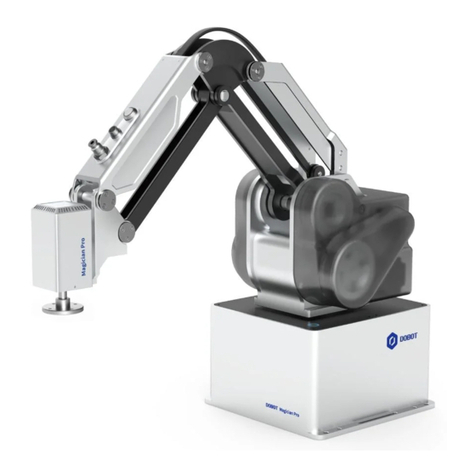
Dobot
Dobot MG400 Hardware user's guide
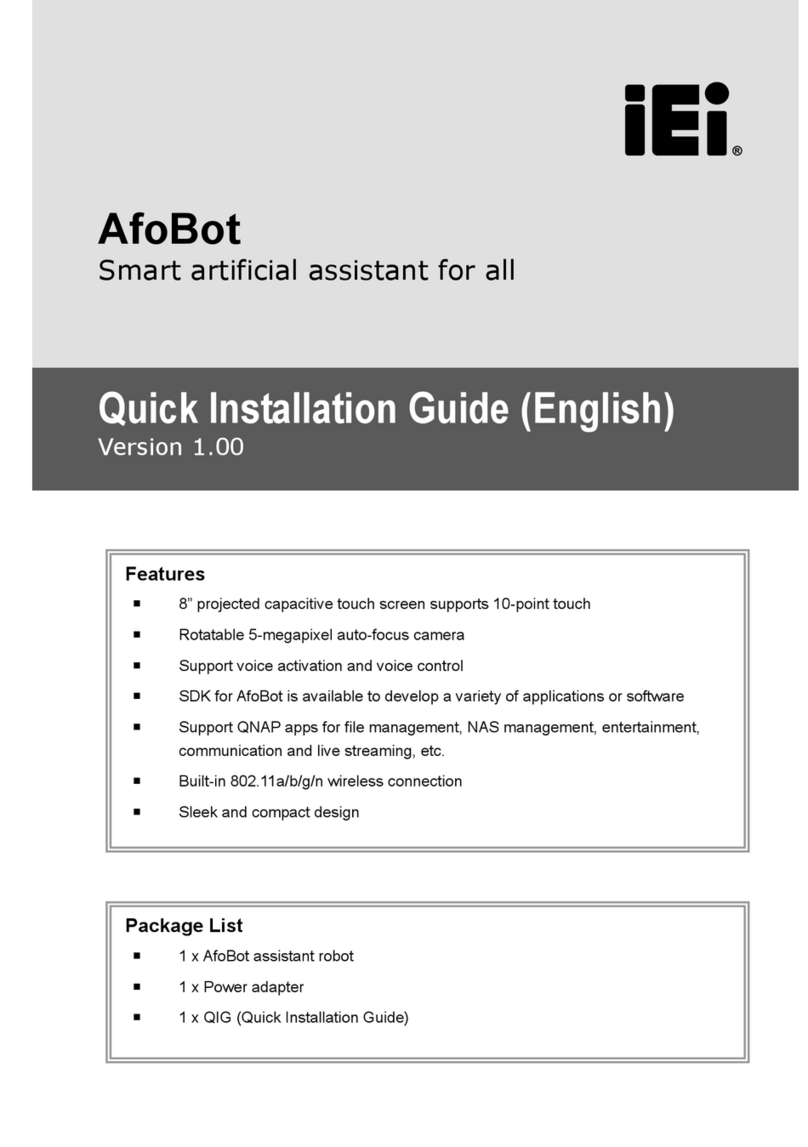
IEI Technology
IEI Technology AfoBot installation guide
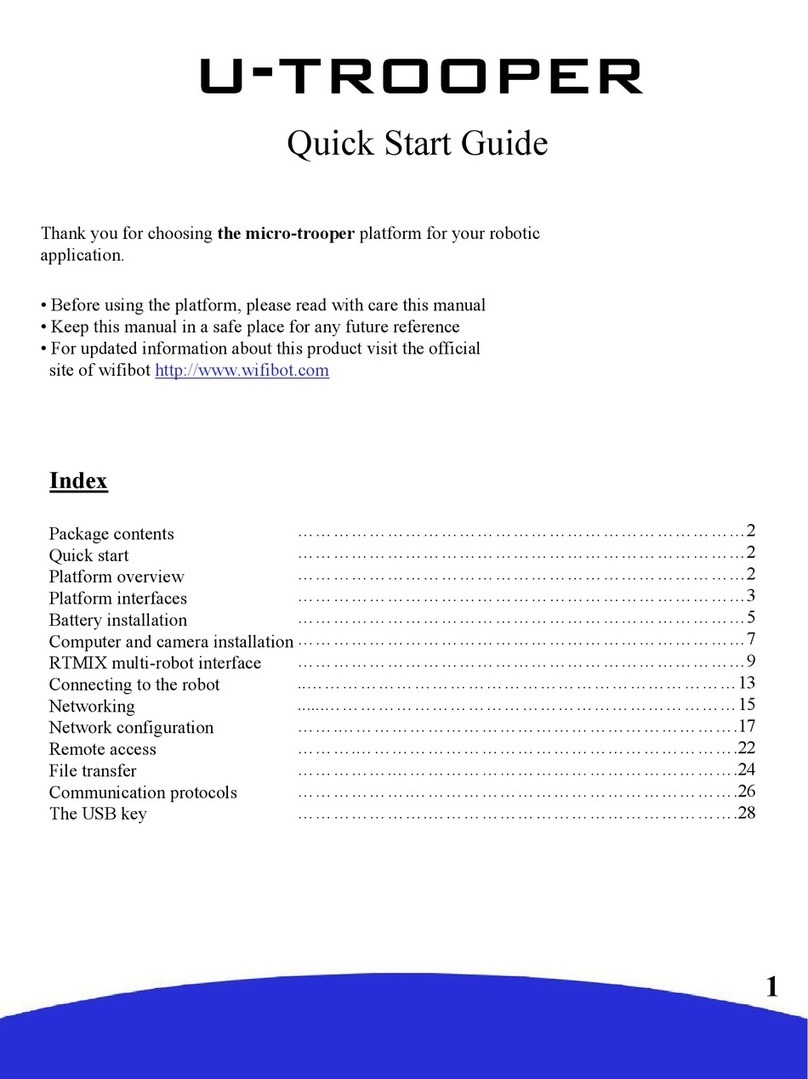
Wifibot
Wifibot U-TROOPER quick start guide

BLUEPRINTLAB
BLUEPRINTLAB REACH ALPHA RS1-1100 Integration manual
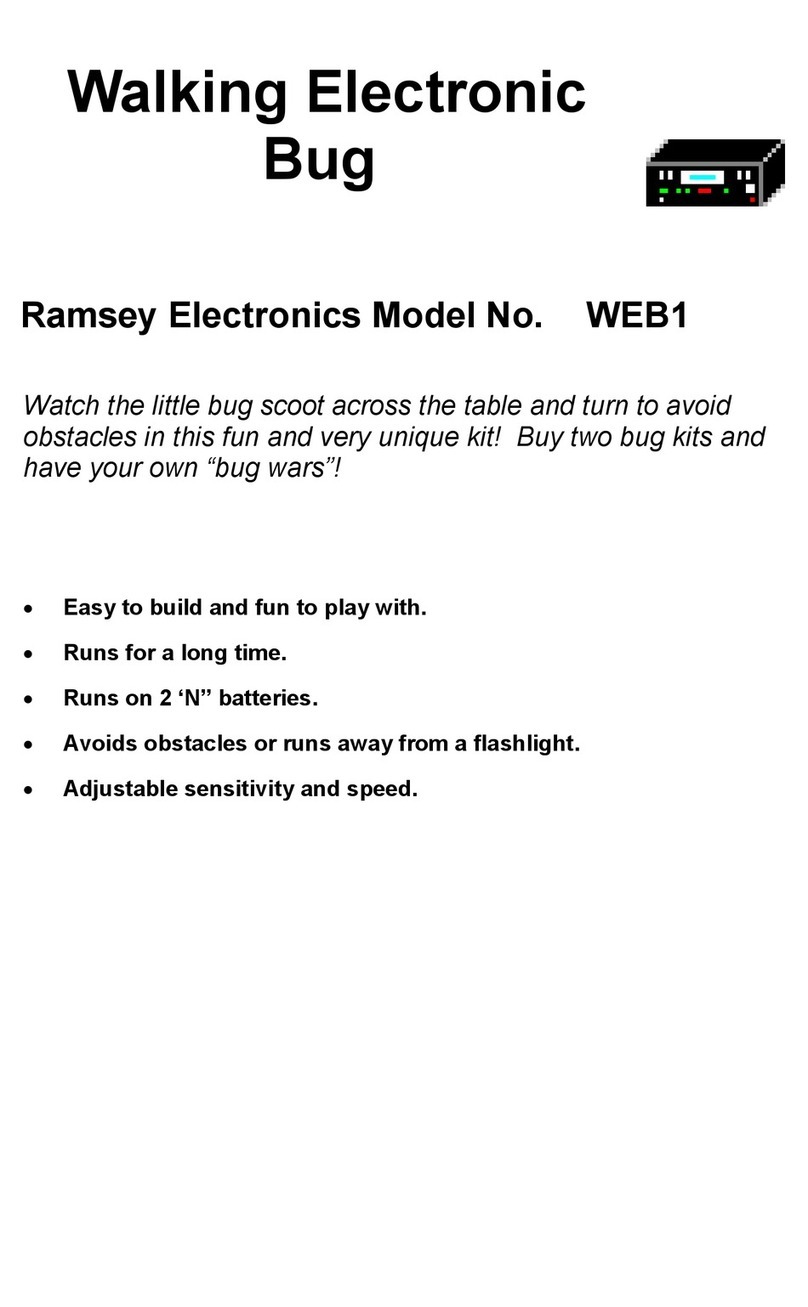
Ramsey Electronics
Ramsey Electronics Walking Electronic Bug WEB1 Assembly and instruction manual
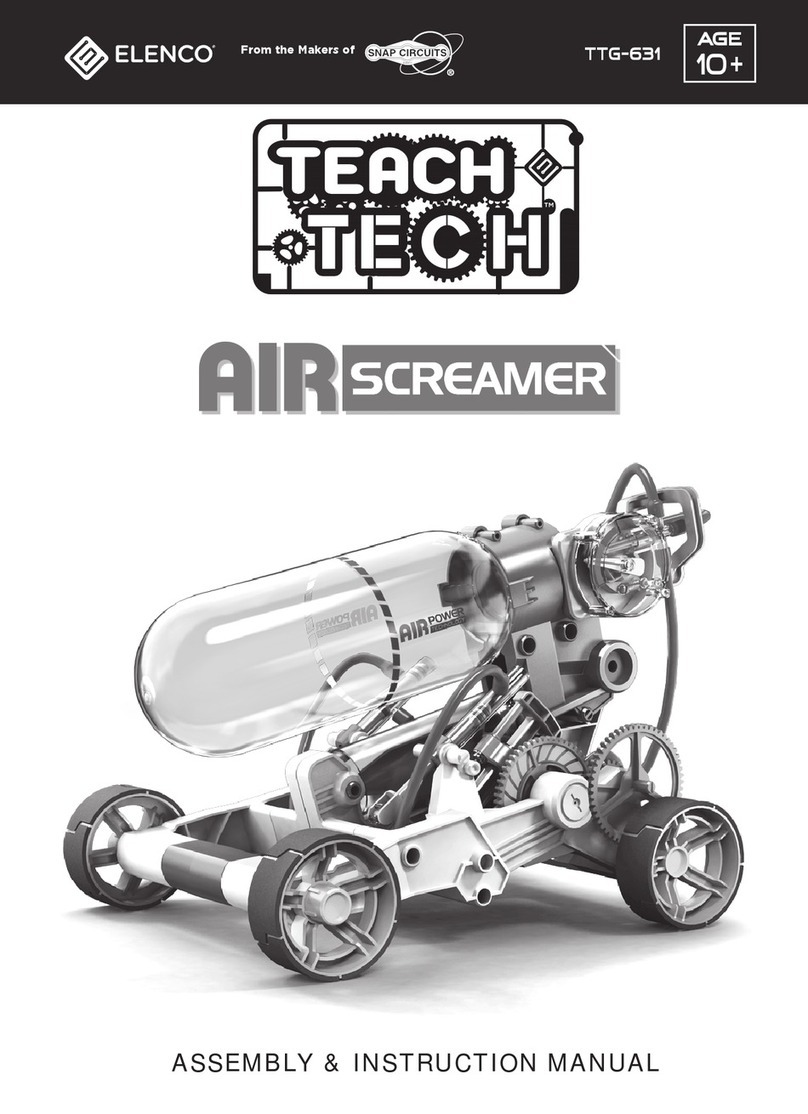
TEACH TECH
TEACH TECH TTG-631 Assembly & instruction manual

